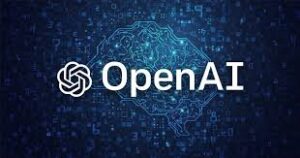OpenAI’s latest data centre expansion reveals the true scale of the artificial intelligence arms race
OpenAI announced on Tuesday that it plans to build five new AI data centers across the United States with partners Oracle and SoftBank through its Stargate project. The new data centers will bring Stargate’s planned capacity to seven gigawatts — enough energy to power more than five million homes. To put this in perspective, a typical AI-focused data centre consumes as much electricity as 100,000 households, but the largest ones under construction today will consume 20 times as much.
This latest announcement represents more than mere corporate expansion—it is a testament to the staggering appetite for computational power that has come to define the modern AI race. Three of the new sites are being developed with Oracle in Shackelford County, Texas; Doña Ana County, New Mexico; and an undisclosed location in the Midwest. The other two sites are being developed with SoftBank, with one in Lordstown, Ohio and the other in Milam County, Texas.
The geography is telling. These locations, scattered across America’s heartland, represent a deliberate strategy to harness the country’s abundant land and, crucially, its electrical grid capacity. This matters because the global AI competition has increasingly become a contest not merely of algorithms or semiconductors, but of raw energy availability.
The Stargate project itself emerged from the highest echelons of American power. The venture plans on investing up to US$500 billion in AI infrastructure in the United States by 2029. It has been planned since 2022 and was formally announced on January 21, 2025, by United States president Donald Trump. The companies will invest $100 billion in the project to start, with plans to pour up to $500 billion into Stargate in the coming years. For context, this sum exceeds the GDP of most nations and represents one of the largest private infrastructure investments in American history.
The timing of this expansion carries profound geopolitical implications. Experts say that China has no power supply issues, allowing it to build as many data centers as it wants without worrying about exceeding its grid’s capacity. Meanwhile, the United States and China account for 80% of the projected growth in electricity consumption from data centers by the end of the decade, according to the International Energy Agency (IEA).
This divergence in energy infrastructure capabilities has not gone unnoticed among American strategists. Data center building is the foundation of AI advancement, and spending on new centers now displaces consumer spending in terms of impact to U.S. GDP. The implications are stark: in the race for AI supremacy, electricity has become as strategic a resource as rare earth minerals or advanced semiconductors.
The scale of energy demand that these facilities represent is almost incomprehensible. AI will be the most significant driver of this increase, with electricity demand from AI-optimised data centres projected to more than quadruple by 2030. This growth trajectory suggests that the current expansion is merely the opening gambit in a much larger transformation of America’s energy landscape.
Yet for all the grandiose announcements and eye-watering investment figures, questions remain about execution. Building data centres of this magnitude requires not merely capital but also skilled labour, reliable supply chains, and—perhaps most critically—sustained political support across multiple election cycles. On Monday, OpenAI said it would receive a $100 billion investment from Nvidia to buy the chipmaker’s AI processors and build out even more AI data centers. Such dependencies on specific suppliers create potential vulnerabilities in what is ostensibly a national security project.
The broader economic implications are equally profound. International relations in 2025 are defined as much by geotechnology disputes as by traditional geopolitics, with global forums and alliances increasingly shaped by technological capabilities rather than conventional military or economic metrics.
For SoftBank’s Masayoshi Son, who chairs the Stargate venture, this represents yet another bet on transformative technology. His track record—including both spectacular successes and notable failures—serves as a reminder that even the most ambitious technological projects carry inherent risks.
The ultimate success of OpenAI’s latest expansion will depend not merely on financial resources or engineering prowess, but on America’s ability to sustain a coherent industrial policy in an era of political polarisation. The five new data centres now under development represent more than infrastructure investments—they are a wager on America’s capacity to marshal its resources for long-term strategic competition.
Whether this gambit succeeds may well determine not just the future of artificial intelligence, but the balance of global technological power for decades to come. In the grand game of nations, electricity has become the new oil, and data centres the new battleships. The race is on, and the stakes could not be higher.
The digital revolution continues to reshape not just how we compute, but how nations compete.








